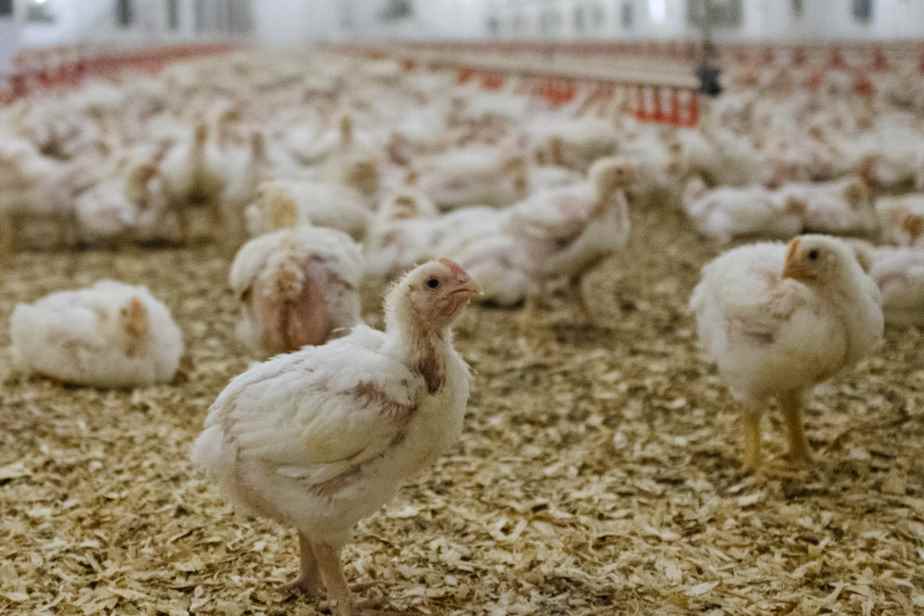The historic avian flu pandemic that is hitting the planet has killed 6,696,000 farmed birds in Canada over the past year, including 532,000 in Quebec, reveals the latest report from the Canadian Food Inspection Agency (CFIA).
The “affected” birds died of the disease or were euthanized on the spot to curb the spread of the virus within the flock or in neighboring farms and buildings.
“In the past, we had a few outbreaks of highly pathogenic avian influenza, but it was often limited to a few farms and even to a single province,” explains Dr.D Manon Racicot, veterinary epidemiologist with the CFIA. “That we have 284 infected farms in the last year is major for Canada, it has never been on such a scale,” she adds.
This highly virulent new episode of H5N1 avian influenza began in December 2021 when the virus was detected in a wild bird in Newfoundland. It has since entered farms in all provinces except Prince Edward Island. British Columbia is the hardest hit place.
The very first case detected in a farmed bird in the history of Quebec occurred last April. Since then, 23 commercial or artisanal farms have suffered an outbreak in the province.
Avian influenza is a reportable disease. When a case occurs, the entire herd must be “depopulated” – meaning euthanized – under CFIA supervision.
A “white carpet […], it’s the worst image you can see on a farm, there is no worse scenario than that, ”explains the president of the Quebec Poultry Farmers, Pierre-Luc Leblanc. Farmers hit by an outbreak are psychologically very shaken, he says. “Nobody wants to go through this, nobody. »
As of January 4, 116 outbreaks were still considered active in Canada, including six in Quebec. According to the CFIA, the most commonly affected species are chickens, turkeys, ducks and geese.
“The fire is on fire”
If cases of bird flu have spread at such lightning speed, it is primarily because the virus has never been so present in wild species, particularly in migratory and aquatic birds.
“We have never seen so much contamination from wild birds, it is truly exceptional. It’s unheard of, “explains the DD Manon Racicot.
Director of the Quebec Center for Wild Animal Health, Dr.r Stéphane Lair agrees. “We have never seen anything of this magnitude in Quebec,” says the man who is also a professor of wildlife health at the Faculty of Veterinary Medicine at the University of Montreal.
“What is particular about this H5N1 viral strain is that it seems to want to persist over time and it has also affected a very, very large geographic region: essentially all of Canada and the United States. It’s even made it to Central and South America. The problem with that is that because it’s so large, there’s a good chance the virus will stick around for a long time. It’s not just a small fire, a kind of bush fire that will eventually die out on its own. The fire is burning across the continent,” he adds.
What to expect in 2023?
Ducks, geese, geese, sandpipers, gannets, common eiders, guillemots, razorbills, crows, crows, snowy owls, eagle owls, gulls: several dozen species of wild birds have been infected.
One of the vectors of spread to farms would come from the secretions or droppings of wild birds that would inadvertently end up on agricultural equipment or the soles of workers.
During the next migratory period, in the spring, the virus will begin to be more present in the environment.
“I expect the birds that will come up [au nord] in the spring will represent the same threat of spread as this spring of 2022 […], but I would say that we will be better prepared. There was a lot of learning,” said agronomist Martin Pelletier, general manager of the Quebec Poultry Disease Control Team, a coordination unit that brings together the various links in the industry.
There is nothing too reassuring coming for us in the short term. We are super worried, we are really, really super worried about the future. We feel better equipped, on the other hand.
Pierre-Luc Leblanc, President of Poultry Breeders of Quebec
MM. Pelletier and Leblanc believe that breeders are increasingly aware of the importance of implementing and respecting a rigorous biosecurity protocol before entering poultry houses.
Once depopulated, farms must be quarantined. In large commercial farms, their average duration was about 84 days last year, underlines the DD Racicot. Neighboring farms are also placed under surveillance for approximately the same period.
To date, the Canadian government has provided approximately $63.4 million to compensate poultry producers affected by the crisis.
Learn more
-
- 50 millions
- More than 50 million birds were slaughtered in infected farms in Europe between October 2021 and September 2022.
Source: Agence France-Presse, December 2022
